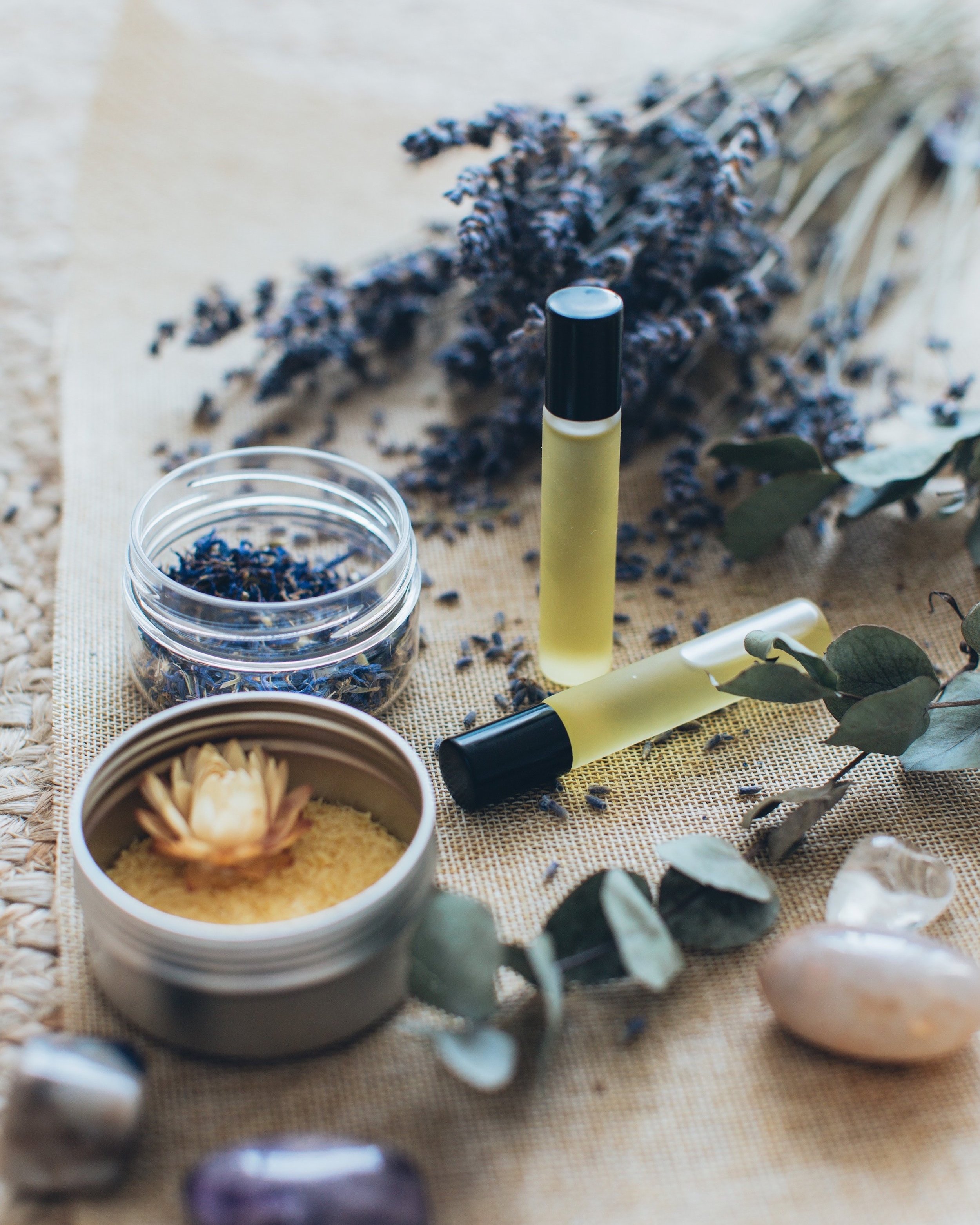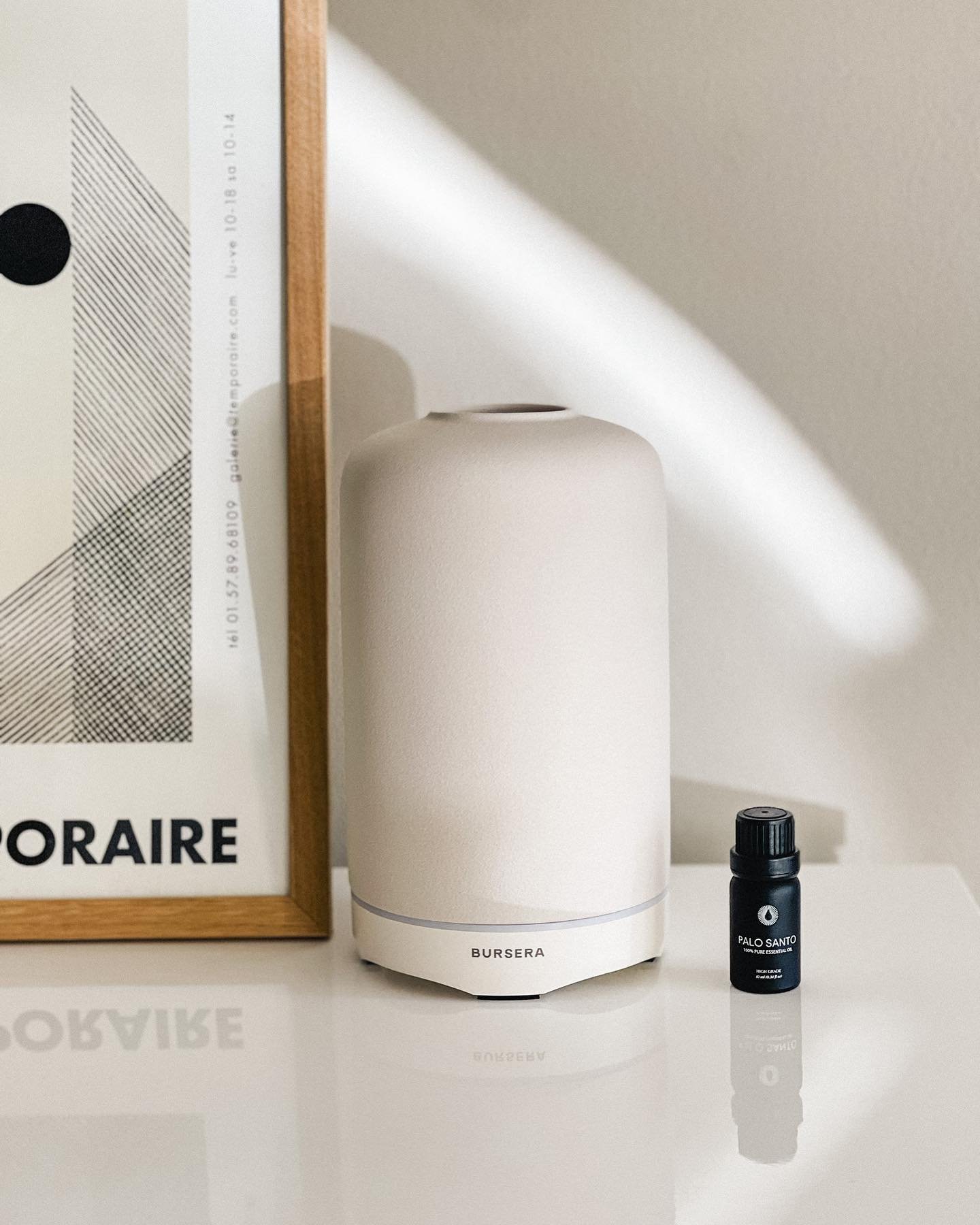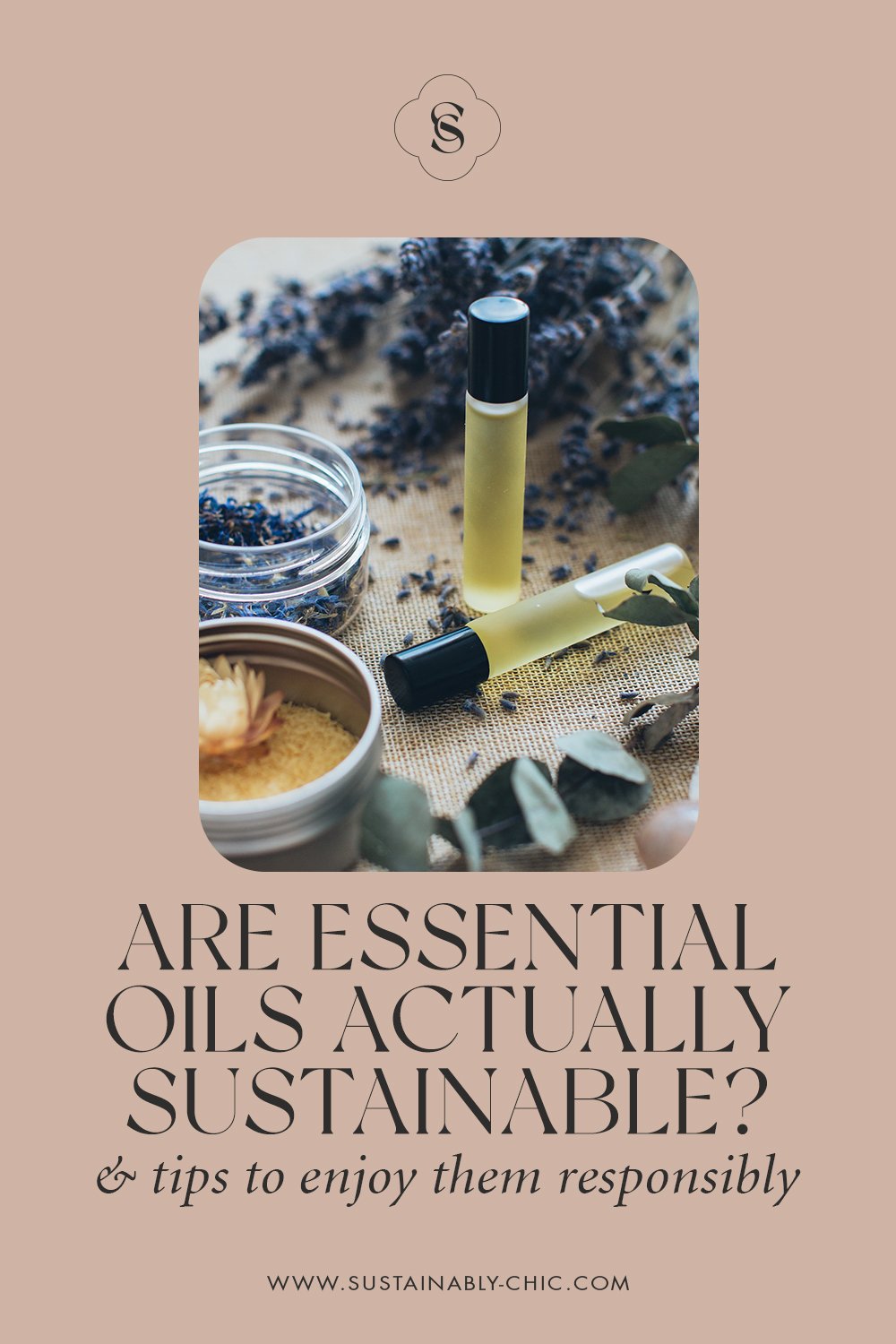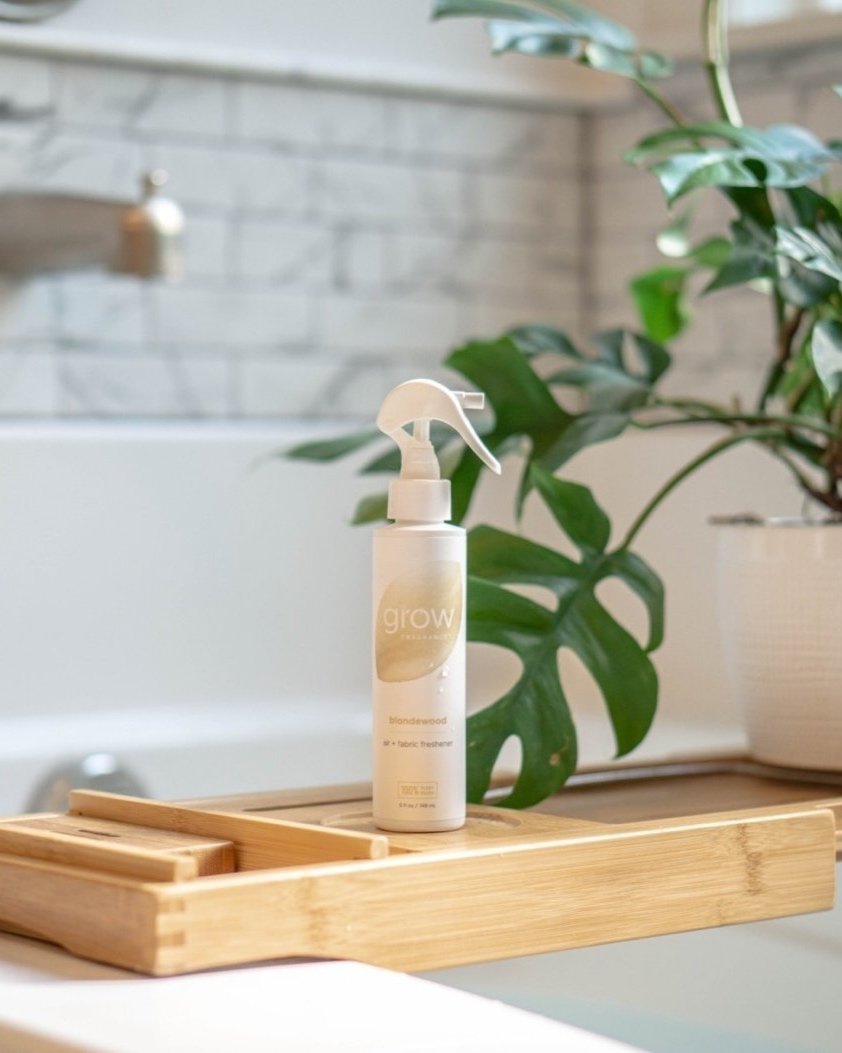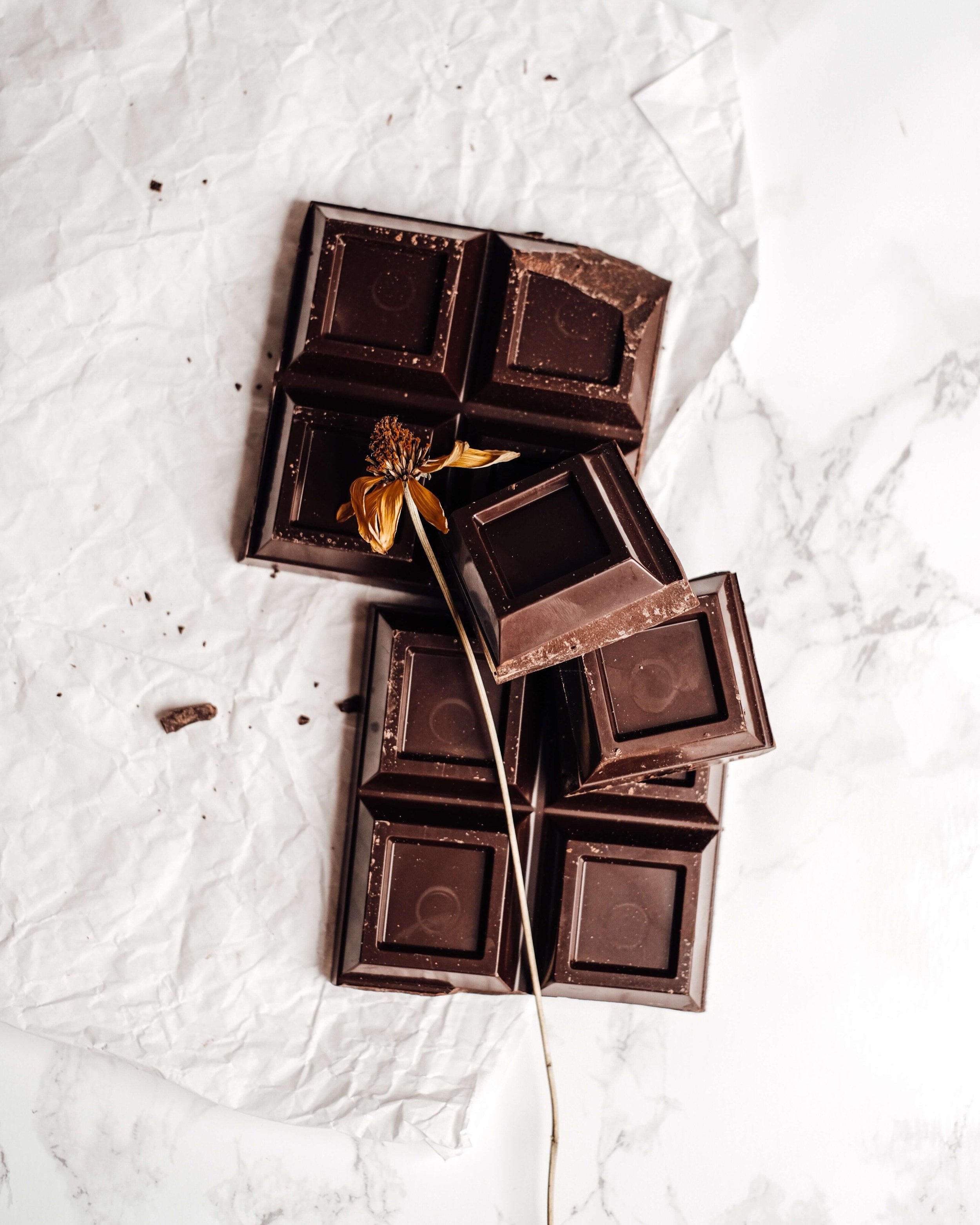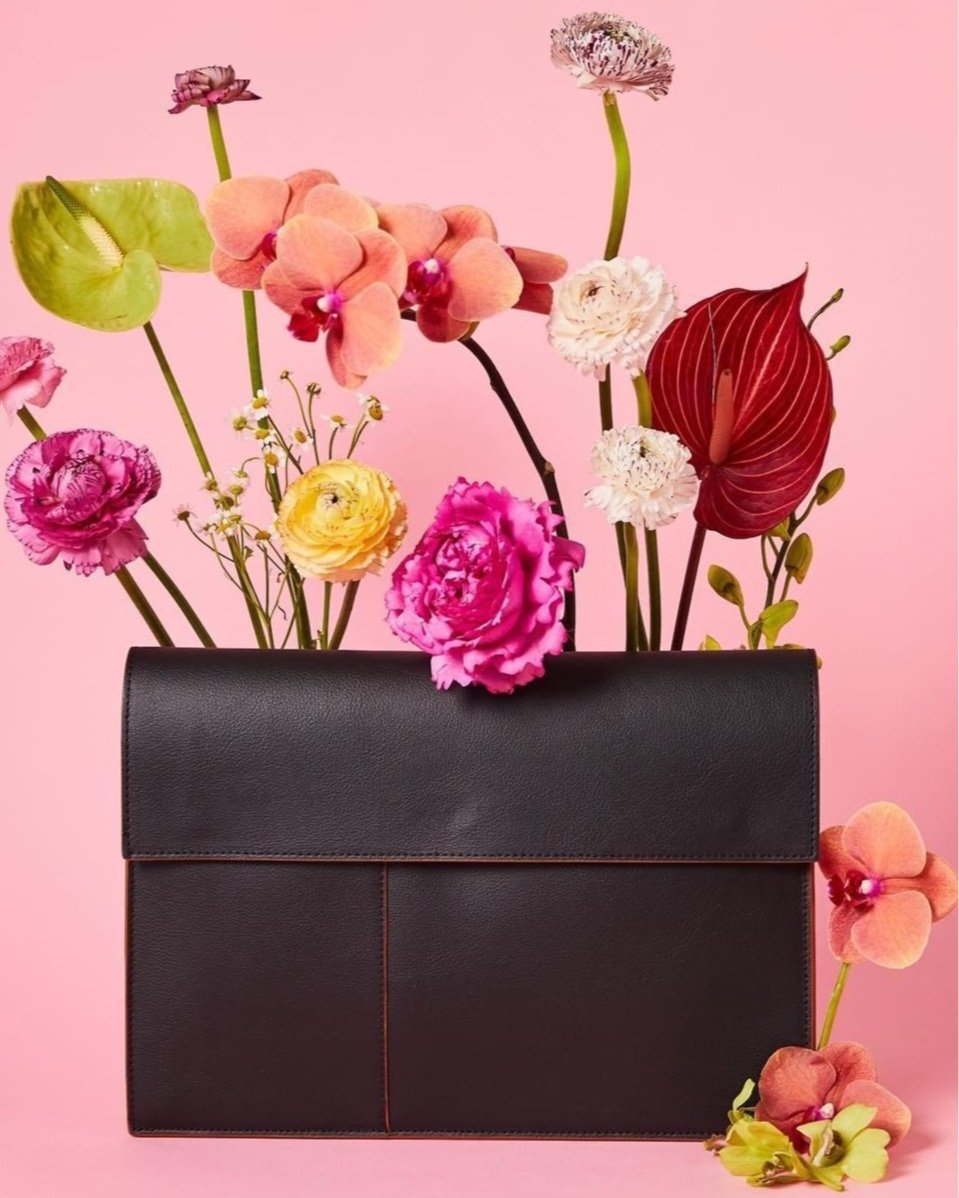How Sustainable Are Essential Oils?
ARE ESSENTIAL OILS ACTUALLY SUSTAINABLE?
When I switched to a more sustainable, non-toxic lifestyle, I suddenly realized how popular essential oils and aromatherapy were!
Everywhere, I would find recipes to make my own cleaning products using essential oils. Many advocates of natural, healthy living would promote products formulated with these precious plant essences that smell oh-so-good.
Essential oils are seen as a healthier and more sustainable alternative to conventional, chemical-laden products. But are they really that sustainable?
In this article, you will learn everything you need to know about the sustainability of essential oils and how to use them in a more eco-friendly way!
WHAT ARE ESSENTIAL OILS?
According to the National Institute of Environmental Health Sciences, essential oils are “concentrated plant extracts that retain the natural smell and flavor of their source”.
They can be derived from thousands of plant species, from different flowers to fruits and trees. In the United States, the most popular (by volume) are orange, peppermint, eucalyptus, lemon, clove, and frankincense essential oils.
Essential oils are extremely popular nowadays all around the world. However, they have actually been used for a very long time in a wide range of different cultures!
Evidence shows that they were already used in ancient India, Egypt, and Persia several thousand years ago. The Greeks and Romans are also known to have traded odoriferous oils and ointments with the countries of the Orient.
Later, during the 11th century A.D., the Arabs discovered how to extract essential oils from plants using steam distillation. This new knowledge and technique quickly spread to Europe during the Middle Ages where essential oils became very widely used and incorporated into remedies.
By the 18th century, about 100 essential oils had been introduced, but it was not until the late 19th and early 20th centuries that chemists really began to understand their chemical nature. As a result, we saw a massive increase in the production of essential oils.
Since then, they have mainly been used as odorants (for instance, in perfumes and cosmetics), flavors (in food and beverages), and pharmaceuticals (in dental products and medicines).
Essential oils are believed to have powerful antibacterial, antiviral, calming, and antidepressant properties. Many are also used for boosting immunity and energy levels, helping digestion, alleviating pain, and reducing stress.
In 2022, the global essential oil market was valued at about $21.8 billion, and it is anticipated to grow at a rate of 7.9% per year from 2023 to 2030. France is the world’s largest exporter of essential oils, followed by the United States.
HOW BAD ARE ESSENTIAL OILS FOR THE ENVIRONMENT?
To understand how sustainable essential oils are, we first need to know how they are produced.
Steam distillation is the most popular method for extracting essential oils from plants. Steam is injected into the plant to release the aroma molecules, converting them into a vapor. The vapor is then condensed back into a liquid, ready to be poured into small bottles. This method is the most cost-effective way to produce essential oils, which is why it is so widely used today.
Other methods are used for certain essential oils such as solvent extraction, maceration, mechanical pressing, or enfleurage (extracting the oil by using fat).
But no matter how the essential oils are extracted, we first need to harvest flowers, fruits, or trees. These are either farmed in controlled environments, or wild-harvested in nature.
And here is the main issue: we need enormous quantities of plants to produce the tiniest amount of essential oil.
Producing essential oils is incredibly resource-intensive
For most essential oils, hundreds of pounds of plant material are needed to make a single bottle! To illustrate a bit more, to produce a single pound of essential oil, we need:
10,000 pounds of rose petals
1,500 lemons
250 pounds of lavender
6,000 pounds of melissa plants
250 pounds of rosemary leaves
50 pounds of eucalyptus leaves
4 million jasmine buds
All essential oils are different, and some are more resource-intensive than others. For instance, certain oils are more difficult to extract from the plant, and some plants provide small yields.
The weather can also impact how much we can extract from the plant from year to year, and thus, we may need more or less plant material to produce one pound of essential oil.
Growing all these plants has a significant environmental impact in itself. The constant planting and harvesting affect the soil quality, and some essential oils are derived from resins, which means that trees have to be cut down to harvest the sap. So the production of essential oils can lead to deforestation.
What’s more, the majority of brands selling essential oils source their raw materials from huge farms where pesticide usage is very common to increase yield and productivity.
Huge quantities of water are also required to grow all the plants. Even the extraction process is very resource-intensive, and some methods use large amounts of water and energy to extract the oils.
For example, to produce rose essential oil, roses have to go through a process called water distillation. The flowers are boiled in water, and after the water cools down, everything is condensed and separated. This way of obtaining essential oils is incredibly water-intensive!
Overharvesting and endangered plant species
Large, corporate farming is extremely common in the essential oil industry. These huge companies often chop down forests or convert arable lands into monoculture farming lands to grow a single plant. They usually don’t care about the environment, and their unethical and unsustainable practices often endanger local ecosystems.
Fortunately, this is not the only way to harvest plants to produce essential oils. Wild harvesting is also very common, but it comes with its own downsides as well.
A commonly accepted rule by harvesting communities is that they should not harvest more than 10% of any wild crop during a single harvesting session. However, many companies disregard this rule, and since there is no regulation, overharvesting is prevalent and threatening many plant species.
The production of frankincense essential oil, which is derived from tree sap, is a great example of overharvesting. Because of the rising global demand, the trees are often tapped year-round rather than seasonally, and harvesters are making more cuts per tree to extract as much sap as possible. These unsustainable harvesting methods weaken the trees, making them eventually die. As a result, these ancient forests are slowly disappearing.
Another issue is that many essential oils come from plants that are listed on the IUCN Red List of Threatened Species. For instance, rosewood and atlas cedarwood, two popular essential oils, are listed as endangered species.
Listed as vulnerable, sandalwood’s population is also decreasing mainly because of illegal harvesting and overexploitation. In India and Indonesia, sandalwood has been so overharvested that it nearly went extinct!
So the increased demand for essential oils is putting a strain on certain plant species. Overharvesting plants, particularly those that are on the threatened species list, can eventually lead to the extinction of many of them.
And when a species goes extinct, there can be many ripple effects on the local communities and ecosystems!
Other environmental issues
Many other factors can make essential oils even less sustainable. For instance, many plants are grown in a controlled environment, which means that a lot of energy is usually used to control the temperature and humidity levels.
We also need to take into account the carbon emissions generated during the transportation process of essential oils all around the world.
Another thing worth mentioning is that most essential oils are very flammable. Because of that, some cities require us to throw their glass bottles in the trash instead of recycling them (they are considered household hazardous waste). The plastic bottle caps and drop dispensers also end up in a landfill.
Finally, many essential oils are toxic to aquatic life, and they can negatively impact marine ecosystems if they are dumped down the drain or if they somehow end up in waterways. They can also be toxic to other animals. For instance, while lavender essential oil is safe for dogs when it is diluted, it should never be used around cats as it is toxic to them!
8 TIPS TO HAVE A (MORE) SUSTAINABLE ESSENTIAL OIL COLLECTION
While most essential oils are far from sustainable, it is impossible to get everyone to stop using them altogether. And in some situations, essential oils can actually be an eco-friendly option!
For instance, cleaning your home with a non-toxic, essential oil-based cleaner is a lot more sustainable (and healthier) than if you used a toxic, chemical-laden cleaner that would pollute the air and waterways. Another example is perfume formulated with essential oils instead of harmful, synthetic fragrances.
Also, if essential oils are helping you improve your health or reduce stress, by no means you should stop using them (as long as you use them safely).
The key is to use them in a mindful and sustainable way. To help you do that, here are our top tips to have a more eco-friendly essential oil collection!
Less is more
Sometimes, we can go overboard with buying essential oils, so make sure you do not buy too many. Keep track of the ones you have, and try not to buy any more before you have used them up.
Also, avoid purchasing them in bundles because you might end up not using all of them. Always think about whether you really need the ones you intend to buy, and try not to waste them: do not use ten drops of essential oil when you know that one or two is enough.
Remember that with essential oils, less is more. They are precious resources that we should not over-consume.
Buy more sustainable essential oils
Before you buy new essential oils, research whether the plant species are on the Red List of Threatened Species (you can do a quick search on the website). If they are endangered or even vulnerable, refrain from purchasing them.
Because they are so rare, endangered species are often obtained through illegal trade, and supporting this may lead to their extinction. Also, avoid purchasing the more resource-intensive ones, such as rose, jasmine, or lemon balm essential oils.
Many essential oils have similar constituents and benefits, so see if you can choose ones that are a lot less scarce and resource-intensive.
Prefer essential oils from wild-harvested plants produced according to ethical harvesting guidelines that do not threaten the species’ survival.
Also, try to buy essential oils that are USDA-certified organic, or at least, ones that come from plants that are native to the land they are grown on. Non-native plants may need chemicals and artificial climate control as well as more water to grow in a foreign environment.
Buy from transparent, sustainable brands
Before you purchase any essential oil, always research how sustainable and ethical the brand is. Don’t be afraid to ask questions if you are not sure about a company.
What is the brand doing to limit its environmental impact? Does it sell products from endangered or overharvested plants? Are its harvesters and distillers following sustainable practices?
Also, check if the brand publishes Material Safety Data Sheets for its essential oils. These provide a chemical breakdown of the composition of the essential oil, and they can help you use them safely and sustainably.
In general, avoid buying essential oils from your grocery store, and instead, support sustainable brands that sell high-quality products. While these may be more expensive, their products will be more eco-friendly and 100% pure.
Be sure to read our sustainable essential oil shopping guide if you are looking for a trustworthy, eco-friendly brand to buy your essential oils from!
Dilute your essential oils
To make your essential oils last longer, dilute them in carrier oils, like coconut or jojoba oil. It is actually always recommended to do so!
Most essential oils should not be applied directly to the skin, and using them too frequently or without reducing their potency with a carrier oil can lead to sensitization.
So diluting them is safer, more economical, and more sustainable, all at the same time!
Learn more about how to use each essential oil
As we saw earlier, many essential oils are toxic to marine life. So before you use them in your bath or pour them down the drain, make sure that you can actually do that. Similarly, if you have pets, research whether you can use your essential oils around them.
And of course, read about how to use them safely: are you allowed to put them onto your skin? How should you use them to avoid any harmful side effects?
Everything should be written in the Material Safety Data Sheets provided with the essential oils. If you cannot find anything, a quick Google search should do the trick!
Take care of your essential oils
Essential oils have a shelf life, usually ranging from 1 to 6 years. So try to use them all up before they expire to avoid waste.
Also, store them in a dark, cool place to prevent them from becoming rancid. If you have some expired essential oils, you can safely use them in cleaning products.
Dispose of them responsibly
When your essential oil bottles are empty, always research how to dispose of them in your local area. Many places do not recycle bottles that contained flammable products, but some do. So check with your local waste-management facility and follow its recommendations.
If you like being creative, find ways to reuse essential oil bottles! Some brands also take them back and recycle them.
Swap essential oils for hydrosols or CO2s
During the steam distillation process, the essential oil is extracted alongside a larger amount of hydrosol. Hydrosols are aromatic waters (one example is rose water) with similar therapeutic properties to their essential oil counterparts, but they are more sustainable as we produce a lot more hydrosol (compared to essential oil) for a given quantity of plant material.
Another option is to swap essential oils for CO2s. These are plant essences extracted from the plant using carbon dioxide as a solvent to dissolve materials. This extraction method is the most efficient as it yields the most oil per pound of plant material!
CONCLUSION
Producing essential oils causes many environmental issues. Enormous quantities of plant material are needed to create a single drop, and many essential oils come from plant species that are overharvested, or worse, endangered.
But it does not mean we should stop using them altogether! We can make better choices and choose more eco-friendly essential oils. Plus, there are many other tips we can follow to have a more sustainable essential oil collection.
That way, we can enjoy these precious plant essences without harming the planet!
About the Author
Eva Astoul is a French freelance writer, specializing in content related to sustainability, simple living, and a growth-focused healthy lifestyle. She runs her own blog, Green With Less, to inspire people to live a more minimalist and sustainable life.
MAKE SURE TO PIN THE PHOTO BELOW TO SAVE THIS POST FOR LATER!
WANT to find SUSTAINABLE BRANDS? VISIT OUR BRAND DIRECTORY!
Our Brand Directory is home to hundreds of sustainable brands, from makeup to cleaning supplies, from underwear to shoes. We have broken everything down by category for easy shopping, along with discount codes unique to Sustainably Chic viewers.

